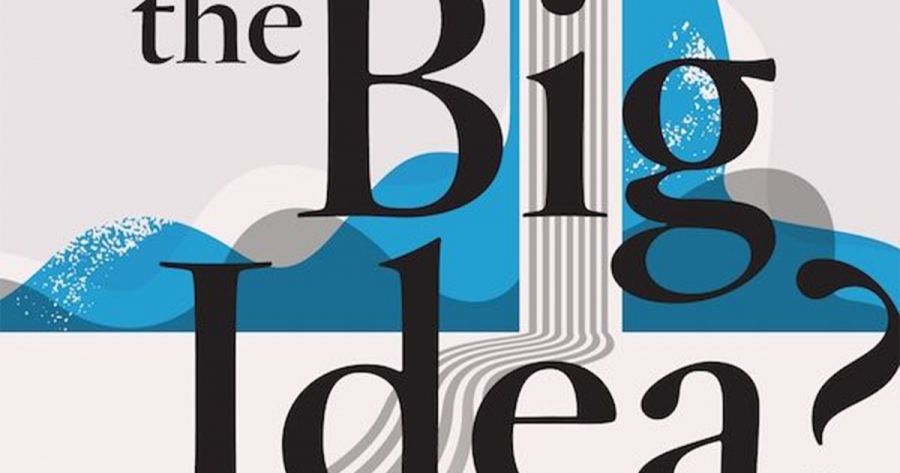
- Free Article: No
- Contents Category: Politics
- Review Article: Yes
- Article Title: Denial, obfuscation, defiance
- Article Subtitle: Two earnest books on the challenges ahead
- Online Only: No
- Custom Highlight Text:
Australia is timid, insular, conservative. It is unimaginative, hidebound to old orthodoxies, blind to readily identifiable truths. It is meeting with little effective action a host of crises: violence against women, an impending climate catastrophe, intergenerational economic inequality. It has a profound disregard for its First Nations people and, despite a long and significant history of immigration, is hostile to people of colour and people who seek to emigrate to it by boat. It dismisses the arts as so much wankery and regards its environment as a resource to be plundered. It celebrates the philistine and esteems the mining industry as a saviour. Its people cannot lift their eyes beyond parochial and short-term self-interest; the threads that bind them to their communities are fraying. Its public debates are vulnerable to misinformation and disinformation, are dominated by special interests, and are conducted at a volume and pitch too loud and too rancorous to be resolved in ways that serve a common good.
- Featured Image (400px * 250px):
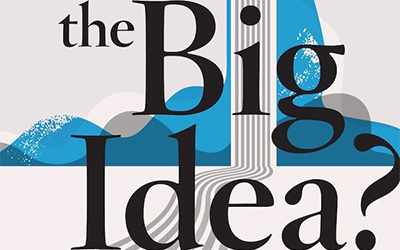
- Alt Tag (Featured Image): Patrick Mullins reviews ‘What’s the Big Idea? 34 ideas for a better Australia’ edited by Anna Chang and Alice Grundy and ‘Age of Doubt: Building trust in a world of misinformation’ edited by Tracey Kirkland and Gavin Fang
- Book 1 Title: What's the Big Idea?
- Book 1 Subtitle: 34 ideas for a better Australia
- Book 1 Biblio: Australia Institute Press, $34.99 pb, 215 pp
- Book 1 Cover Small (400 x 600):
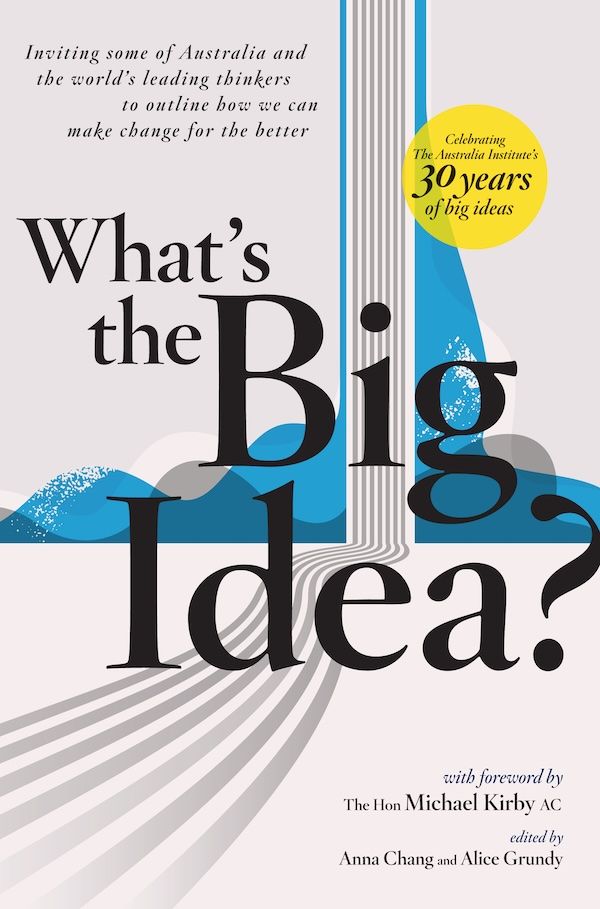
- Book 1 Cover (800 x 1200):

- Book 2 Title: Age of Doubt
- Book 2 Subtitle: Building trust in a world of misinformation
- Book 2 Biblio: Monash University Publishing, $34.99 pb, 301 pp
- Book 2 Cover Small (400 x 600):
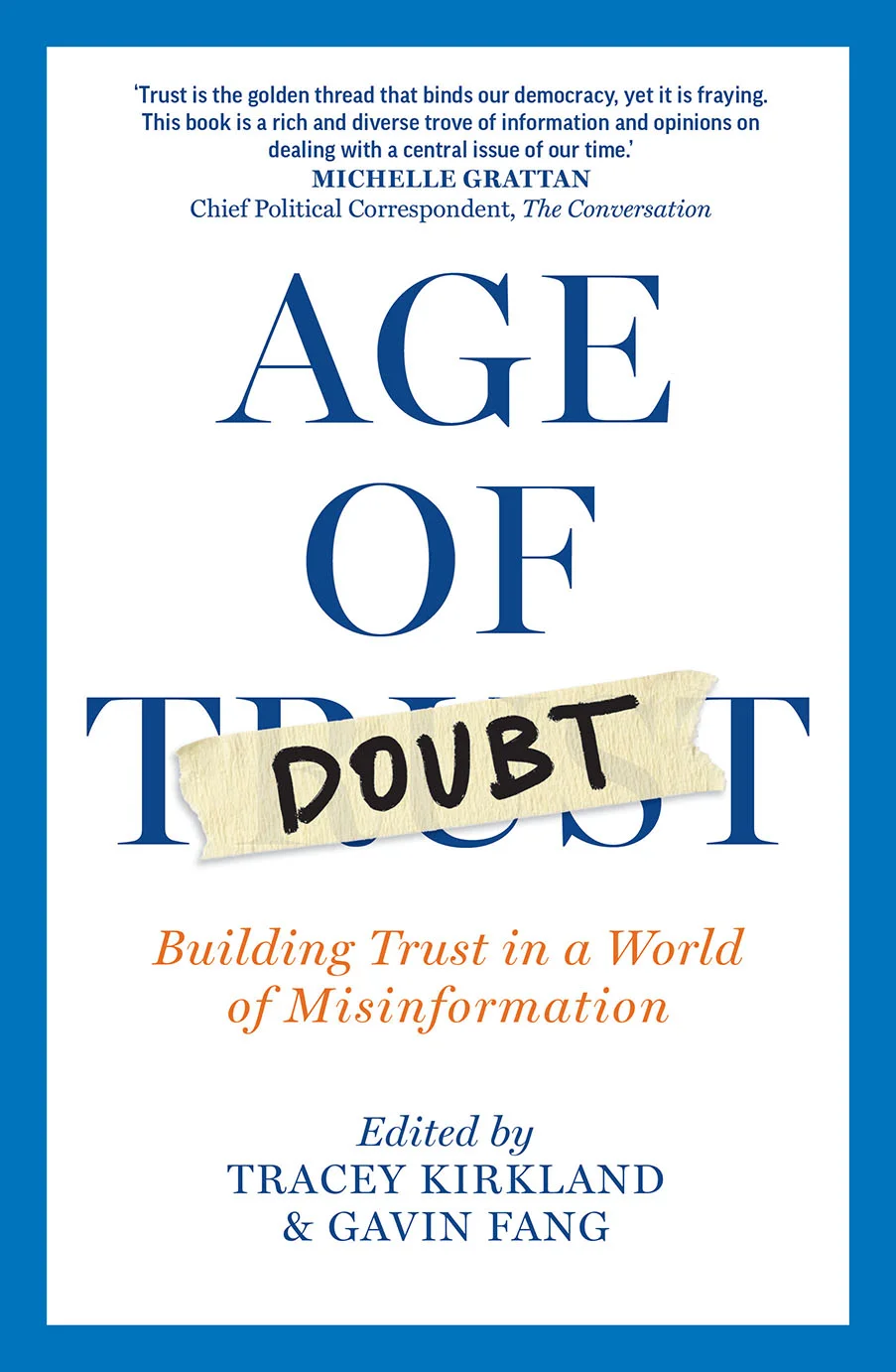
- Book 2 Cover (800 x 1200):

- Book 2 Readings Link: https://www.readings.com.au/product/9781923192133/the-age-of-doubt--2025--9781923192133#rac:jokjjzr6ly9m
Such is the general starting point of What’s the Big Idea?, a collection of suggestions for change edited by Anna Chang and Alice Grundy and published to celebrate the thirty years that the Australia Institute has been in business. The progressive ethos informing that starting point might, in earlier times, have seen the authors and publishers tarred as part of the ‘black armband’ brigade. But the common dissatisfaction at the root of the book is better understood as an argument against the torpor that dominates Australian public life and debate, encapsulated by John Howard’s vision for an Australia that was ‘relaxed and comfortable’. In its restless inveigling against Australian stagnancy, then, What’s the Big Idea? is a gentler iteration of Brian Penton’s Think – Or Be damned! (1941) and Donald Horne’s The Lucky Country (1964); in its attempts to provide a new agenda for a progressive government with an overly incremental approach, it is a successor to the Robert Manne-edited Dear Mr Rudd (2008).
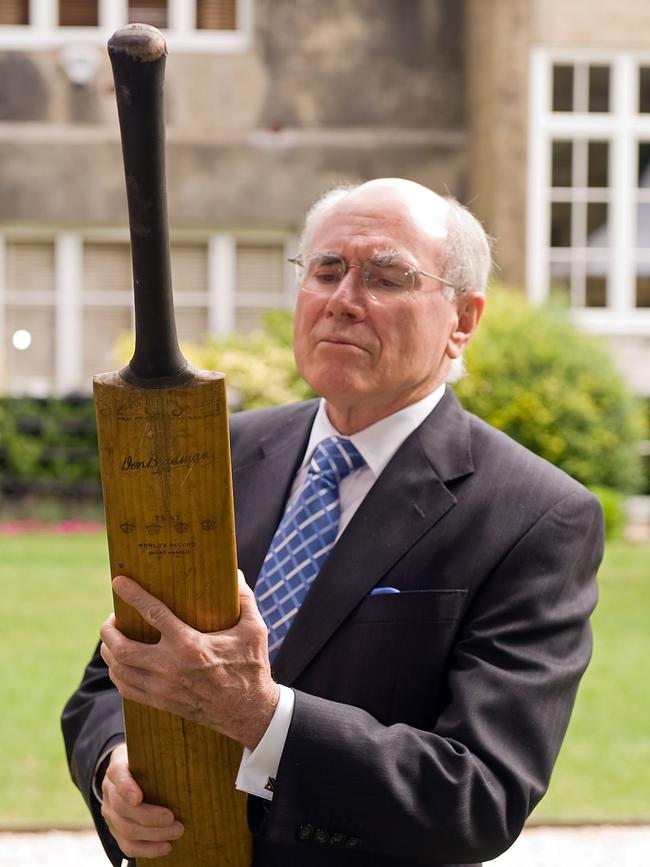 John Howard, 2009 (via News.com)
John Howard, 2009 (via News.com)
The contributors are familiar to anyone alive to the eddies of current affairs in Australia; each contribution is fluent in the argumentative format of the newspaper op-ed. This is a strength and a weakness of the volume. The short length works best for those authors calling for specific, concrete changes: Kieran Pender arguing for the creation of a federal whistleblower protection authority; Brian Schmidt for increasing research and development funding to three per cent of GDP; Jennifer Robinson for legislation banning the strategic use of lawsuits to silence activists and journalists. It is less effective for those calling for changes of attitude and outlook, urgent as those calls might be. Polly Hemming wants Australians and their governments to be braver, Peter Doherty wants them to shout the truth unfettered by fear, and Allan Behm wants Australians to stop looking for a protector and instead act with informed confidence. Some of these read as exercises in exhortatory rhetoric: easy to agree with on the page, but a different proposition when applied to specific changes.
This raises the problem that is unstated in this volume. Anyone can propose a change; it is seeing it enacted and endure that is the difficult part. As Amy Remeikis writes, aptly: ‘Watching Australian politics is like watching a bucket of crabs – anyone who attempts to rise above the fray and promote change or a better way is pulled back into the bucket by their peers.’ From personal demonisation to distorted attacks, the tools that may be used against those arguing for change are many. Few of the contributions in What’s the Big Idea? reckon with how proponents can resist being pulled back into the bucket.
In its favour, however, the Australia Institute has three decades’ experience of agitating against the taming effects of the status quo. Former High Court Justice Michael Kirby, who spoke at the Australia Institute’s 1994 launch and at its 2000 office relocation, points out that, in some ways, Australia has caught up to the arguments and ideas aired by the Institute in its early days. ‘Ideas that were radical in their time, including talk about improving the environment, reducing inequality, and protecting Indigenous and other vulnerable minorities,’ Kirby writes, ‘are all now mainstream.’ The task ahead is to pursue an ever-elusive ideal: a country that is fairer, more just, more sustainable.
Age of Doubt, a collection of essays edited by the ABC’s Tracey Kirkland and Gavin Fang, with contributors drawn from think tanks, news media, business, and civic groups, is equally earnest but decidedly more urgent. Beginning with the claim that trust is increasingly scarce in Australia, it surveys how trust has been eroded and how it may be restored. That task is critical: without trust, the Nobel Prize-winning journalist Maria Ressa is repeatedly quoted saying, ‘We have no shared reality, no democracy, and it becomes impossible to deal with our world’s existential problems.’
Given the stakes, the solutions offered feel inadequate. Will the ‘radical impartiality’ that ABC reporter Patricia Karvelas prescribes be potent enough for journalists dealing with bad-faith actors? Is a personal choice to accept ‘that there is something beyond ourselves’, as Anglican bishop Michael Stead suggests, going to override the atomising effects of ‘extreme individualism’?
Solutions that are structural, broad, and tangible are more convincing. Australian chief scientist Cathy Foley argues that making knowledge produced in Australia accessible to all Australians would do much to restore trust in the peer review system that underpins scientific and medical research; Canadian media executive Catherine Tait and New_Public co-founder Eli Pariser suggest new ways that the public spaces so conducive to community may be recreated online; UNSW academic Toby Walsh pushes a smorgasbord of regulation for the Internet, most of all; and University of Tasmania scholar Kaz Ross urges transparency and openness as a way to forestall perceptions of a conspiracy during times when the truth is protean.
Running through Age of Doubt is an argument for arresting a profound decline in ethical behaviour, of the need to close the gap between stated values and actions. Whether it was Kevin Rudd forsaking the ‘great moral challenge’ of climate change, churches covering up the sexual abuse of children they were supposed to protect, news organisations acting in ways indefensible, or businesses and universities underpaying staff and defrauding customers, there has been ample reason in the past decade and a half for the public to stop extending its trust. Such profound failures are exacerbated by the common resorts of those who have been found out: denial, obfuscation, rationalisation, defiance.
An unfortunate example of how pervasive this is comes packaged as a case study of how to go about rebuilding trust. Describing 7-Eleven’s experience in 2015, when reports emerged that its franchisees were underpaying staff, former chairman Michael Smith invokes Richard Kimble, protagonist of The Fugitive (1992). This bizarre comparison, between an experienced board of directors that failed to detect that franchisees were drastically underpaying staff and an innocent man stitched up for murder, is made possible by legal hair-splitting (‘recognising that the company and the franchisees were separate legal entities, it was agreed by all that 7-Eleven per se had not underpaid any staff’), which 7-Eleven publicly, if not legally, disavowed. More tellingly, it rests on a belief that 7-Eleven was the victim of a media intent on casting roles in a particular narrative. ‘A healthy part of accepting a senior role [in a corporate] is that you will likely be attacked by people with little interest in facts or fairness,’ Smith writes. ‘You must accept this, as a rugby player knows that being hit is part of the game.’
‘It is necessary and healthy to recognise your failures,’ Smith concludes, ‘not only because we should, but because we then have the opportunity to make them right.’ The editors and contributors to What’s the Big Idea? and Age of Doubt are willing to engage in that scrutiny and to suggest ways that the flaws revealed can be made right. Time will tell whether Australians will take the opportunities presented.


Comments powered by CComment